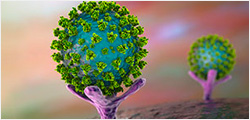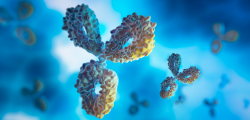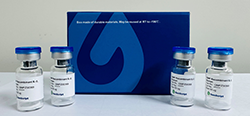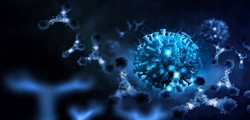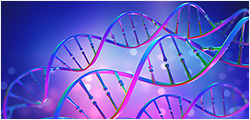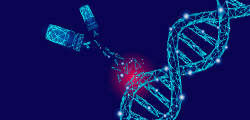| Species |
Human |
| Protein Construction |
Expressed with additional N-terminal sequence (MSYYHHHHHH DYDIPTTENLYFQGAMGS).
SPARC (Ala18-Ile303)
Accession # P09486 |
|
| Purity |
> 95% as analyzed by SDS-PAGE
> 95% as analyzed by HPLC |
| Endotoxin Level |
< 1 EU/μg of protein by LAL method |
| Biological Activity |
Fully biologically active when compared to standard. The ED50 as determined by its ability to inhibit the cell growth of Mv1Lu mink lung epithelial cells is less than 3.0 μg/ml, corresponding to a specific activity of > 333.0 IU/mg. |
| Expression System |
E. coli |
| Theoretical Molecular Weight |
36.1 kDa |
| Formulation |
Lyophilized from a 0.2 μm filtered solution in PBS, pH 7.4. |
| Reconstitution |
It is recommended that this vial be briefly centrifuged prior to opening to bring the contents to the bottom. Reconstitute the lyophilized powder in sterile distilled water or aqueous buffer containing 0.1 % BSA to a concentration of 0.1-1.0 mg/ml. |
| Storage & Stability |
Upon receiving, this product remains stable for up to 6 months at -70°C or -20°C. Upon reconstitution, the product should be stable for up to 1 week at 4°C or up to 3 months at -20°C. Avoid repeated freeze-thaw cycles. |
| Target Background |
SPARC, an acronym for ’secreted protein, acidic and rich in cysteine', is also known as osteonectin or BM-40. It is the founding member of a family of secreted matricellular proteins with similar domain structure. The 303 amino acid , 43 kDa protein contains a 17 aa signal sequence, an N-terminal acidic region that binds calcium, a follistatin domain containing Kazal-like sequences, and a C-terminal extracellular calcium (EC) binding domain with two EF-hand motifs. SPARC is produced by fibroblasts, capillary endothelial cells, platelets and macrophages, especially in areas of tissue morphogenesis and remodeling. SPARC shows context-specific effects, but generally inhibits adhesion, spreading and proliferation, and promotes collagen matrix formation. For endothelial cells, SPARC disrupts focal adhesions and binds and sequesters PDGF and VEGF. SPARC is abundantly expressed in bone, where it promotes osteoblast differentiation and inhibits adipogenesis. |
| Synonyms |
Basement-membrane protein 40; BM-40; Osteonectin; Secreted protein acidic and rich in cysteine |
For laboratory research use only. Direct human use, including taking orally and injection and clinical use are forbidden.















